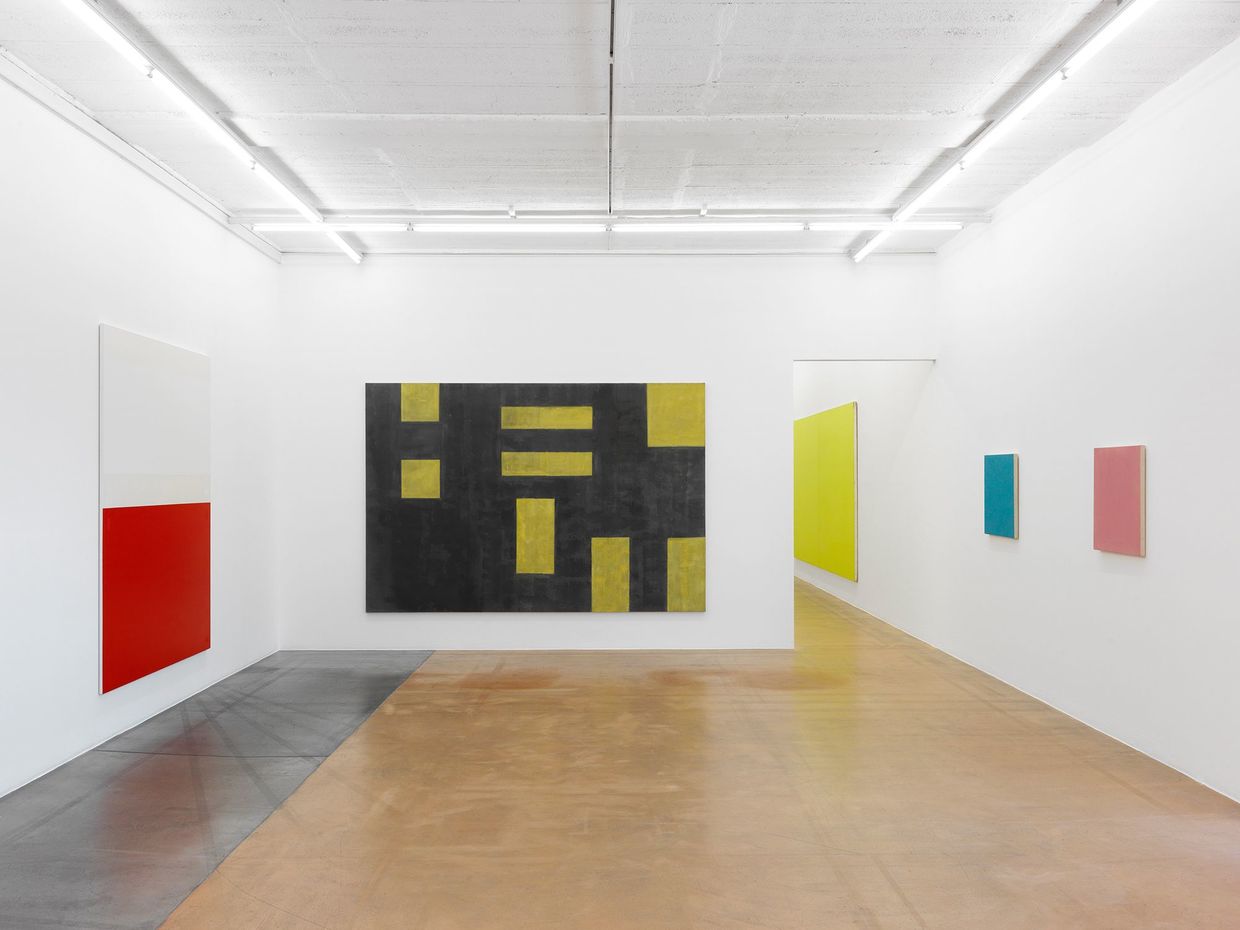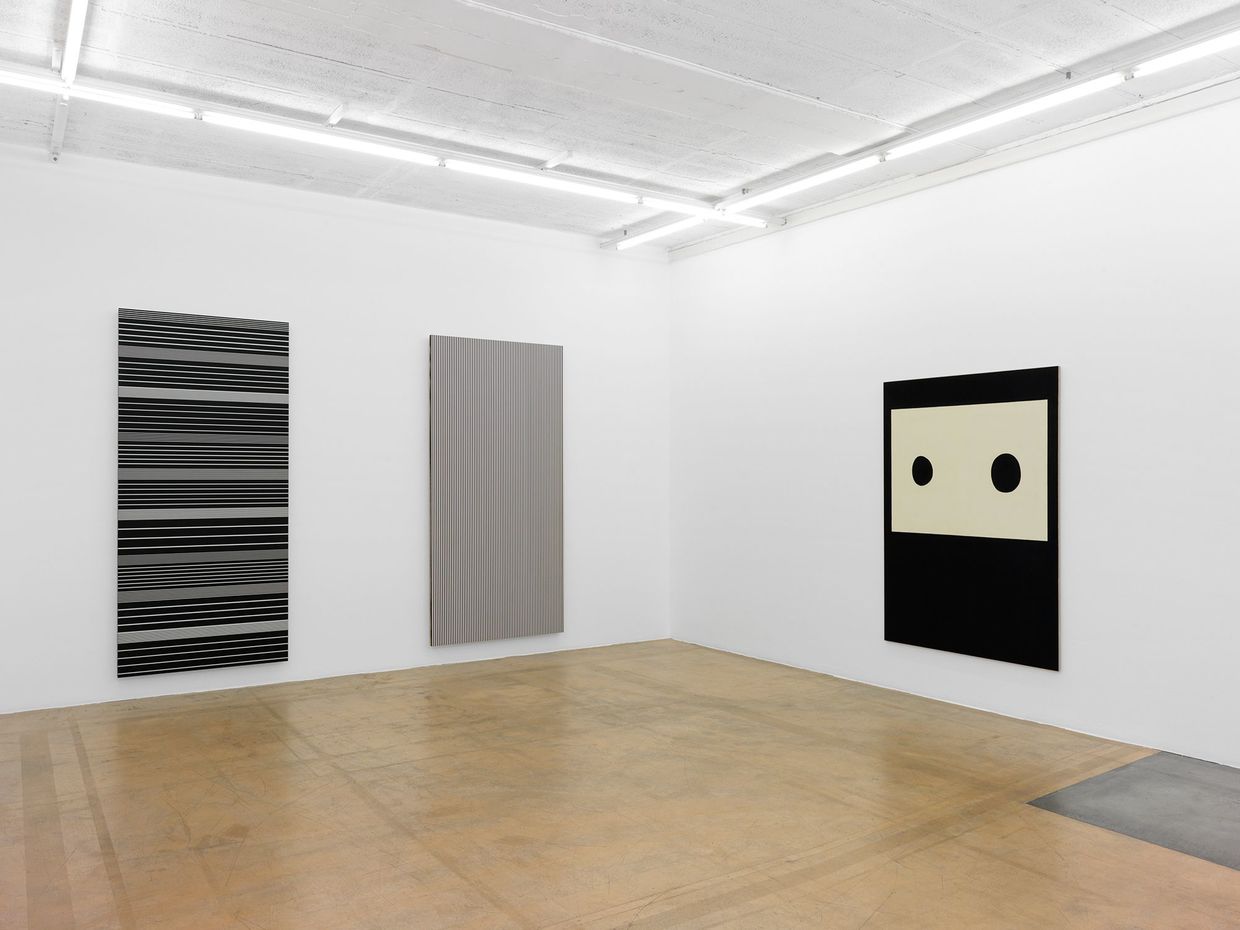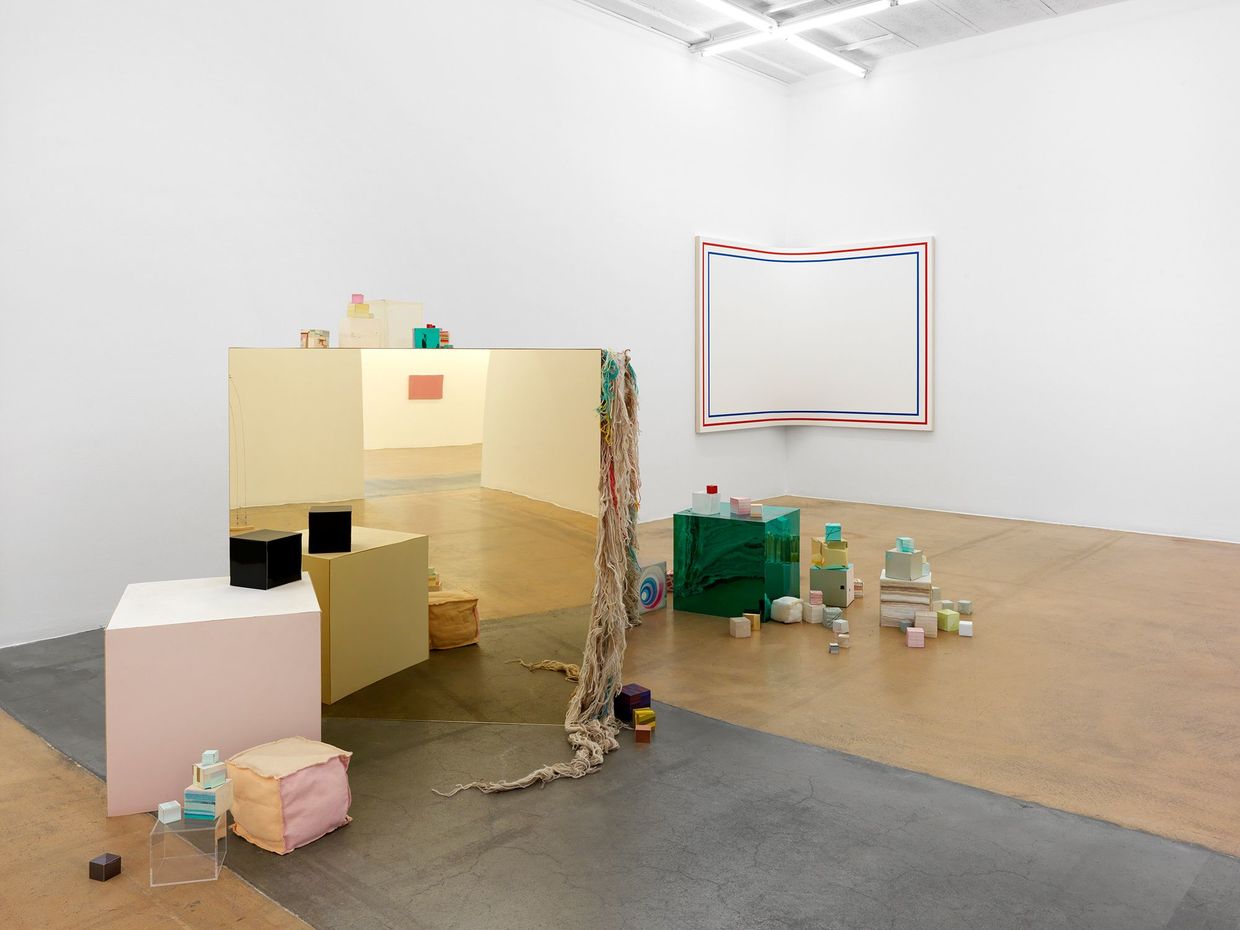John M Armleder, Francis Baudevin, Lisa Beck, Alexandre Bianchini, Stéphane Dafflon, Philippe Decrauzat, Steve DiBenedetto, Marcia Hafif, Helmut Federle, Sylvie Fleury, Christian Floquet, Francesca Gabbiani, Peter Halley, Karen Kilimnik, Alix Lambert, Christian Marclay, Cady Noland, Olivier Mosset, Amy O’Neill, Steven Parrino, Michael Scott, Haim Steinbach, Sidney Stucki, Blair Thurman, John Tremblay, Alan Uglow, Vidya Gastaldon & Jean-Michel Wicker, Dan Walsh
GVA <-> JFK looked back over exchanges between the New York and French-speaking Switzerland art scenes from the 1980s and 1990s. A period that spans Olivier Mosset and Marcia Hafif’s discussion of “radical painting” (to quote the title of the exhibition at the Williams College Museum of Art of 1984) and the apparent blast of this abstract vocabulary in the practice of artists such as Philippe Decrauzat, Stéphane Dafflon, and Lisa Beck.
As one progressed from room to room, one followed the stages of an intergenerational discussion that originated in painting but rapidly transcended any definition by medium. This is as true for the conversations John M Armleder would have in the mid-1980s with Peter Halley and Haim Steinbach on the notion of “cultural geometry” (or “Neo-Geo” as critics referred to it at the time), as it is for those he had with Helmut Federle and Olivier Mosset on the legacy of abstraction in the “postmodern” period. In this sense, the project paid tribute to two exhibitions organized by John M Armleder: Peinture abstraite (Ecart, Geneva 1984) and Peinture (on the initiative of Pierre Huber, Geneva 1990).
Olivier Mosset's close dialogue with Steven Parrino—and the reference to his show with Cady Noland in 1999—underlined that the repeated announcements of painting’s death was summoning irruptions of the real (and its inherent violence) and appointing the figure of the zombie as its new herald. For many artists of the 1990s, painting had thus to be “reloaded” with external content (music, design, appropriation, etc.). This is true of Francis Baudevin, who refashioned pharmaceutical packages into found abstract compositions; of Blair Thurman, whose constructions, in relief, are inspired by car subcultures; and of John Tremblay, who sought to give his painted objects the quality of handmade industrial components. Others, such as Dan Walsh and Michael Scott, attempted to renew the viewer’s relationship with painting through a symbolic or optical phenomenology. At the end, it is most likely the combined pressure of these various interrogations of the pictorial field that explains its spatial and referential explosion at the beginning of the 2000s, as the work shown here by Vidya Gastaldon & Jean-Michel Wicker so perfectly illustrates.
In passing, the exhibition reminded us that women remained somewhat aloof from a story still mostly narrated in masculine mode, while artists such as Sylvie Fleury and Karen Kilimnik were brought together through exhibitions (such as Bad Girls, in 1993), to highlight the emergence of a “new feminist sensibility.”
We were reminded, too, through the project’s dialogic dimension and the source of its loans (almost exclusively Geneva), of the importance of the two scenes' go-betweens—whether artists, curators (like Bob Nickas) or gallery owners—and the co-presence of the cultural actors (institutions, schools, publishers, alternative spaces, etc.) that make up a city's ecosystem.
- Exhibition curated by Lionel Bovier



